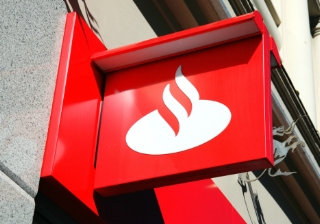Financing the future – the options for commercial borrowers
The economy is in a fragile state at present, with inflation running a 40-year high and soaring energy prompting. That said, while consumers and businesses, families and individuals are facing a tough winter, both people and businesses will always continue to plan for the future.

"Commercial term loans can offer real flexibility and are often considered for asset management situations."
From a business point of view, Alternative Bridging is still seeing an increase in demand for finance from owner-occupied businesses that are making use of their premises to release capital. This is unsurprising, as property is often the largest and most valuable asset available and is ideally placed to be used as collateral.
There are a number of product options available for businesses with an appetite to release capital and brokers with access to these options will be well-placed to help their clients.
Bridging finance, for example is increasingly used by businesses that want to release capital over a short term and can be utilised to keep projects moving and investment continued, where funds are tied up in assets. Bridging can also be used to cover unexpected costs, such as large tax bills, although it’s important to ensure that this approach is used as part of an overall plan to manage cashflow and that there is a robust exit strategy in place.
For those who want to take a more long-term view than a commercial bridging loan, one option is a term loan. At Alternative Bridging, for example, we can offer commercial loans for terms of three to five years. These are flexibly underwritten first and second charge non-regulated loans for property investors and the business community. They can be utilised to provide finance for purchase or refinance, for working capital or equity release.
This type of loan can be structure to match cash-flow and include special arrangements for interest to be accrued when the property income is not yet stabilised, so they can be ideal for business start-ups.
Commercial term loans can offer real flexibility and are often considered for asset management situations. For instance, if income is improved over the period of the loan or other improvements are made and the value of the asset increases, additional advances can be made.
Unlike a bridging loan, with a term loan, the borrower will have to prove they have the ability to service the monthly interest and brokers look at their client’s funding requirements in order to ascertain what type of finance will be most suitable.
Finally, there is an alternative option for commercial finance. At Alternative Bridging, we offer something called the Alternative Overdraft. This offers a flexible drawdown facility that provides ‘liquidity on tap’, allowing borrower to access funds at short notice, with the opportunity to draw, repay or reduce to match changing needs. The facility can be drawn upon and repaid time and time again, with no need for expensive setting-up charges each time a loan is needed.
Despite challenging economic conditions, businesses continue to plan for the future and entrepreneurs are always looking for opportunities. By leveraging their commercial property assets, businesses have range of options to fund their next venture.
Breaking news
Direct to your inbox:
More
stories
you'll love:
This week's biggest stories:
Budget
Budget: Government introduces mansion tax on high-value homes

Budget
Budget: Government introduces £2,000 salary sacrifice cap

Lifetime Isa
Budget: Lifetime ISA to be scrapped in favour of new first-time buyer ISA

Budget
Budget: Property income tax to rise by 2%

FCA
Firms required to report complaints involving vulnerable customers under simplified FCA rules

Santander
Santander joins mortgage price war with new rates from 3.51%
